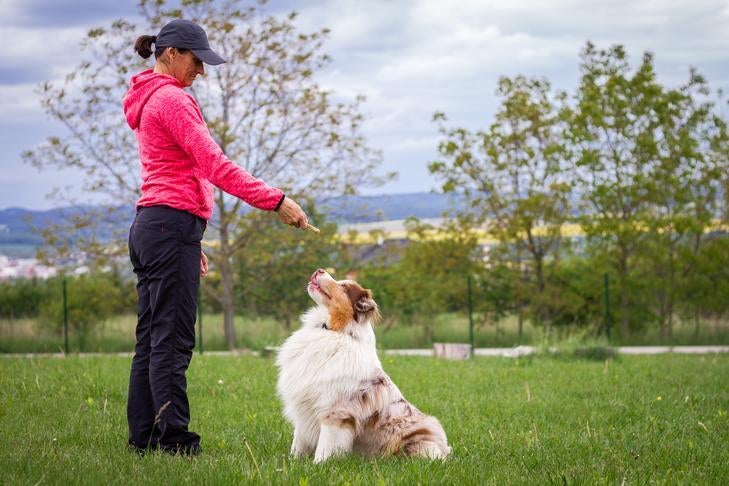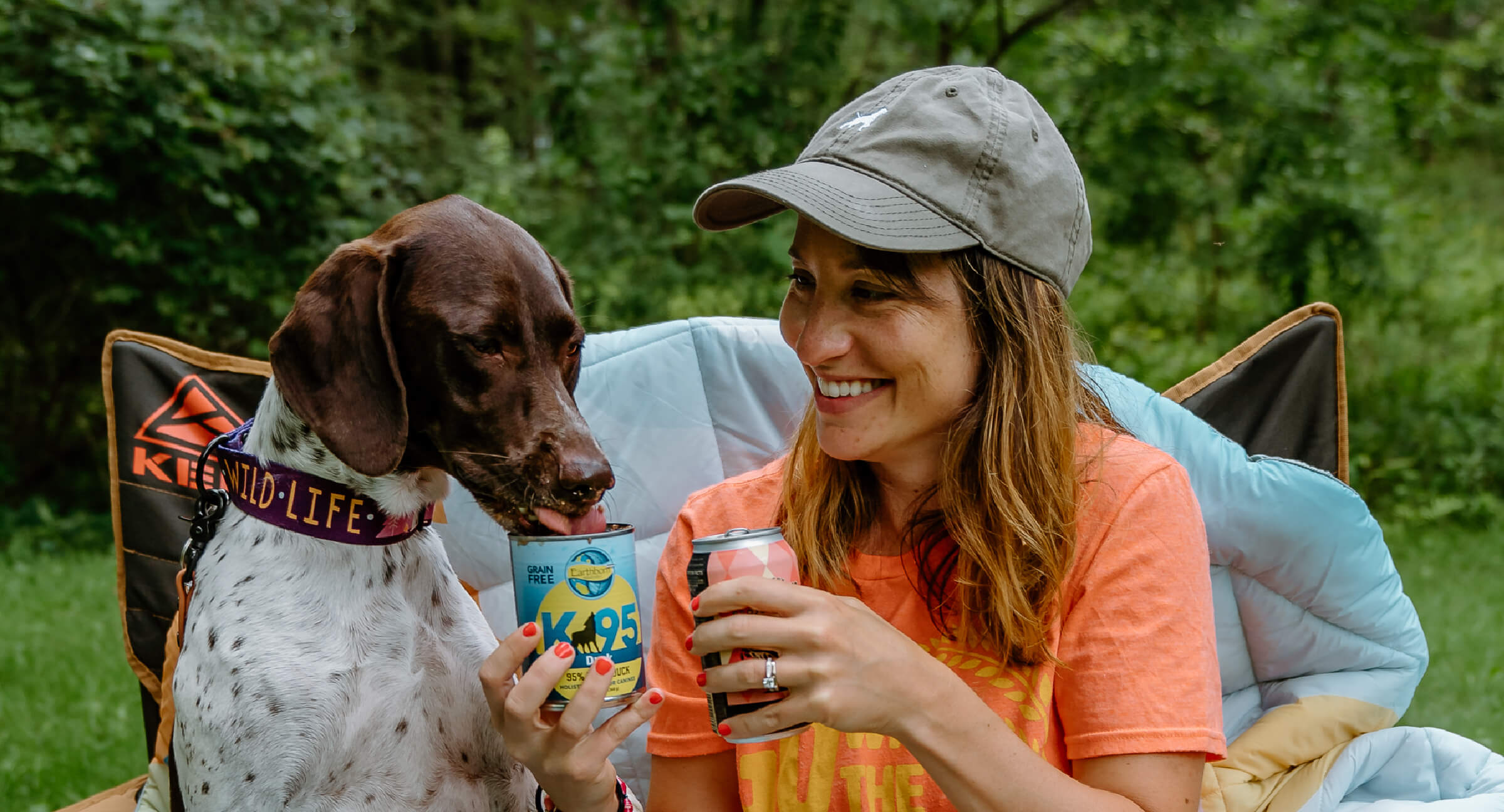Leading Dog Educating Strategies Every Owner Should Know

Positive Reinforcement Techniques
Making use of favorable support strategies is crucial for reliable pet dog training, as it fosters a trusting bond between the fitness instructor and the pet. This approach concentrates on satisfying preferable habits as opposed to punishing unwanted ones, creating an environment conducive to finding out. Incentives can include deals with, appreciation, or playtime, which motivate pets to repeat the habits that gain them these benefits.

Furthermore, this strategy boosts the canine's excitement for training sessions. When pet dogs associate training with favorable experiences, they are a lot more engaged and responsive. Beyond instant therapy, favorable support urges a joint partnership in between the canine and fitness instructor, lowering anxiousness and fear
To make the most of efficiency, it is crucial to deliver incentives promptly, ensuring the canine connects the habits with the support. Basically, positive reinforcement techniques not only generate better-trained pet dogs yet additionally advertise an unified collaboration in between dog and owner.
Remote Control Training Approach
The remote control training method is a highly effective method that develops upon the concepts of positive reinforcement by adding a distinct sound to mark desired behaviors. This technique uses a little portable gadget that creates a clicking sound, allowing trainers to communicate with their canines in a immediate and clear way. When a pet dog does an actions that the owner wants to urge, the remote control is turned on, complied with by a reward, normally in the kind of treats or praise.
The key to successful remote control training depends on uniformity and timing. It is critical to click at the precise moment the wanted behavior occurs, ensuring that the dog links the noise with the activity and the succeeding benefit. This method not only boosts communication but also cultivates a more powerful bond between the proprietor and the pet dog, as it motivates engagement and communication throughout training sessions.
Remote control training can be put on a variety of commands and behaviors, from basic obedience to extra intricate tricks. Its versatility and performance make it a preferred strategy amongst expert trainers and pet dog owners alike, leading the way for a trained and responsive canine companion.
Leash Training Fundamentals
Effective chain training is essential for making certain a delightful and risk-free strolling experience for both canines and their proprietors. Dog training. Leash training need to start very early and be come close to with persistence and uniformity. Start by picking an appropriate chain and collar or harness. A flat collar may help some canines, while others may gain from a harness that lowers pulling.
Present your canine to the leash slowly, enabling them to explore it in a comfortable setting. This entails rewarding your dog for walking beside you rather than pulling ahead.
If your canine begins to pull, stop strolling right away. Wait up until they return to your side before resuming. This teaches them that pulling does not cause advance. Furthermore, method various walking atmospheres to assist your canine adapt to interruptions.
Routine practice will certainly solidify your dog's understanding of chain rules. Keep in mind that chain training is a recurring procedure; perseverance and uniformity will generate the most effective results, cultivating a favorable experience for both you and your canine companion.
Socializing Methods
Socialization is an important element of pet training that need to preferably begin throughout puppyhood yet can be advantageous at any kind of age. Efficient socializing assists pets create confidence and reduces the chance of behavioral concerns. To apply effective socialization approaches, expose your pet to a range of settings, visit this website people, and various other animals.
Begin with regulated settings, such as pup courses or organized playgroups, where young pet dogs can interact safely. Gradually introduce your pet dog to brand-new experiences, consisting of various sounds, surfaces, and activities. Make certain these encounters are favorable and satisfying to develop a feeling of safety.
For grown-up canines or those doing not have direct exposure, begin with low-stress circumstances. Short, favorable interactions with pleasant people and calm pets can create positive associations. Make use of treats and praise to strengthen preferable actions during these experiences.

Consistency and Patience
Recognizing the value of uniformity and persistence in visit the website canine training is important for achieving long-term outcomes. Educating a pet dog is a progressive process that calls for an organized technique and unwavering dedication from the owner. Each command or behavior have to be strengthened regularly to help the dog understand what is anticipated of them. Inconsistent training can lead to complication, making it challenging for the canine to understand commands or behaviors, ultimately preventing development.
Pets, like people, find out at their very own rate. This cultivates a relying on partnership in between the dog and owner, motivating a much more ready and passionate student.
To grow uniformity and perseverance, develop a routine training regular, utilize the exact same commands, and make certain that all relative use the very same training concepts - Dog training. By doing so, you produce a steady atmosphere helpful to discovering, enabling your canine to create and flourish into a mannerly friend
Final Thought
In final thought, effective pet training strategies, such as positive reinforcement, clicker training, and proper chain training, are necessary for promoting a healthy and balanced owner-dog relationship. Furthermore, applying socializing approaches and maintaining consistency and patience throughout the training process contributes dramatically to a dog's overall wellness. By incorporating these methods, pet dog owners can help with the growth of well-adjusted, loyal pets, eventually improving the high quality of life for both the canine and the owner.
Amongst the most noticeable approaches are positive support, clicker training, and chain training, each offering distinct benefits that add to a well-behaved pet. As we check out these basic techniques, it becomes apparent that understanding their subtleties can considerably influence the training experience and official source the dog's general habits.Making use of positive reinforcement strategies is vital for reliable canine training, as it promotes a trusting bond between the instructor and the dog.In conclusion, reliable canine training strategies, such as favorable reinforcement, clicker training, and appropriate leash training, are important for promoting a healthy and balanced owner-dog relationship. By integrating these techniques, pet owners can facilitate the development of well-adjusted, obedient family pets, inevitably enhancing the high quality of life for both the dog and the owner.